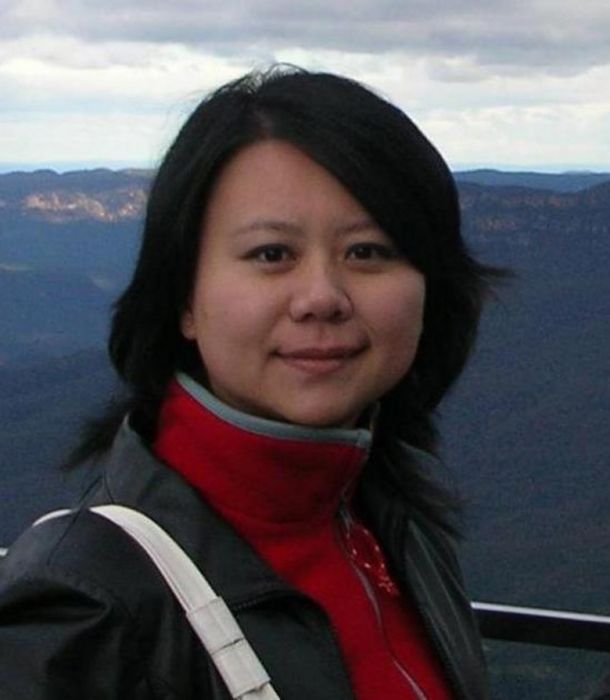中科院生物與化學交叉研究中心、中科院上海有機化學研究所博士生導師。
基本介紹
- 中文名:方燕珊
- 國籍:中國
- 職業:研究員
- 畢業院校:美國賓夕法尼亞大學
- 主要成就:中國科學院生物與化學交叉研究中心 研究員、課題組長
簡歷:,研究領域,理論,代表論著:,
簡歷:
2002年9月-2007年12月 美國賓夕法尼亞大學 神經科學博士學位
2008年1月-2008年5月 美國賓夕法尼亞大學 博士後
2008年6月-2013年8月 美國霍華德休斯醫學研究院 研究助理
2013年9月-至今 中國科學院生物與化學交叉研究中心 研究員、課題組長
2008年1月-2008年5月 美國賓夕法尼亞大學 博士後
2008年6月-2013年8月 美國霍華德休斯醫學研究院 研究助理
2013年9月-至今 中國科學院生物與化學交叉研究中心 研究員、課題組長
研究領域
方燕姍課題組隸屬於中國科學院上海有機化學研究所和上海藥物研究所共同建立的中科院生物與化學交叉研究中心。課題組主要研究方向為神經損傷和神經退行性疾病中的神經軸突退化變性壞死(axon degeneration)。
理論
神經軸突退化變性壞死是急性神經損傷如脊髓損傷和腦創傷以及很多與衰老相關的慢性神經退行性疾病如老年痴呆症(AD)、帕金森氏症(PD)、亨廷頓氏症(HD)、多發性硬化症(MS)、肌萎縮性脊髓側索硬化症(ALS)等疾病中的常見病變。此外,糖尿病、青光眼和化療引起的神經毒性也會導致繼發性的神經軸突的退化變性壞死。由於人類的中樞神經在受損或變性壞死後再生能力極其有限,如何保護受損或患病的神經,預防、延緩、阻止乃至逆轉神經軸突退化變性壞死是神經生物學領域的一個重要前沿課題。
方燕姍課題組課題組運用全新的果蠅神經損傷活體動物模型結合分子遺傳學、細胞生物學、生物化學、藥物化學、高解析度螢光成像、新一代測序技術、現代蛋白質組學和代謝組學等技術研究調控神經軸突退化變性壞死和促進神經再生的分子機制,並以此作為基礎開發用於疾病診斷治療的生物標誌物和新型藥物。
代表論著:
1.FANG, Y., Soares, L., and Bonini, N.M. (2013) “Design and Implementation of In Vivo Imaging of Neural Injury Responses in the Adult Drosophila Wing.” Nature Protocols, 8(4): 810-819.
2.Garbe, D.S., FANG, Y., Zheng, X., Sowcik, M., Anjum, R., Gygi, S.P., and Sehgal, A. (2013) “Cooperative interaction between phosphorylation sites on PERIOD maintains circadian period in Drosophila. PLoS Genetics, 9(9): e1003749.
3.FANG, Y., and Boinini, N.M. (2012) “Axon Degeneration and Regeneration: Insights from Drosophila Models of Nerve Injury.” Annual Review of Cell and Developmental Biology, 28: 575-597.
4.FANG, Y., Soares, L., Teng, X., Geary, M., and Bonini, N.M. (2012) “A Novel Drosophila Model of Nerve Injury Reveals an Essential Role of Nmnat in Maintaining Axonal Integrity.” Current Biology, 22(7): 590-595. (Highlighted by Current Biology; Recommended by Faculty of 1000; Featured in ScienceDaily, Cell News, Science World Report, etc.)
5.FANG, Y., and Sehgal, A. (2010) “Phosphatases and Circadian Clocks.” in Handbook of Cell Signaling, 2nd Edition, eds. Bradshaw, R. A. & Dennis, E. A. Oxford:Academic Press, pp. 877-882.
6.Wu, Y., Bolduc, F.V., Bell, K., Tully, T., FANG, Y., Sehgal, A., and Fischer, J.A. (2008) “A Drosophila Model for Angelman Syndrome.” PNAS, 105(34): 12399-12404.
7.FANG, Y., Sathyanarayanan, S., and Sehgal, A. (2007) “Post-translational Regulation of the Drosophila Circadian Clock Requires Protein Phosphatase 1 (PP1).” Genes and Development, 21(12): 1506-1518.
8.Sehgal, A., Joiner, W., Crocker, A., Koh, K, Sathyanarayanan, S., FANG, Y., Wu, M., Williams, J., and Zheng, X. (2007) “Molecular Analysis of Sleep:Wake Cycles in Drosophila.” Cold Spring Harb Symp Quant Biol, 72: 557-564.
9.Stein, J.M., Bergman, W., FANG, Y., Davison, L., Brensinger, C., Robinson, M.B., Hecht, N.B., and Abel, T. (2006) “Behavioral and Neurochemical Alterations in Mice Lacking the RNA-binding Protein Translin.” Journal of Neuroscience, 26(8): 2184-2196.
2.Garbe, D.S., FANG, Y., Zheng, X., Sowcik, M., Anjum, R., Gygi, S.P., and Sehgal, A. (2013) “Cooperative interaction between phosphorylation sites on PERIOD maintains circadian period in Drosophila. PLoS Genetics, 9(9): e1003749.
3.FANG, Y., and Boinini, N.M. (2012) “Axon Degeneration and Regeneration: Insights from Drosophila Models of Nerve Injury.” Annual Review of Cell and Developmental Biology, 28: 575-597.
4.FANG, Y., Soares, L., Teng, X., Geary, M., and Bonini, N.M. (2012) “A Novel Drosophila Model of Nerve Injury Reveals an Essential Role of Nmnat in Maintaining Axonal Integrity.” Current Biology, 22(7): 590-595. (Highlighted by Current Biology; Recommended by Faculty of 1000; Featured in ScienceDaily, Cell News, Science World Report, etc.)
5.FANG, Y., and Sehgal, A. (2010) “Phosphatases and Circadian Clocks.” in Handbook of Cell Signaling, 2nd Edition, eds. Bradshaw, R. A. & Dennis, E. A. Oxford:Academic Press, pp. 877-882.
6.Wu, Y., Bolduc, F.V., Bell, K., Tully, T., FANG, Y., Sehgal, A., and Fischer, J.A. (2008) “A Drosophila Model for Angelman Syndrome.” PNAS, 105(34): 12399-12404.
7.FANG, Y., Sathyanarayanan, S., and Sehgal, A. (2007) “Post-translational Regulation of the Drosophila Circadian Clock Requires Protein Phosphatase 1 (PP1).” Genes and Development, 21(12): 1506-1518.
8.Sehgal, A., Joiner, W., Crocker, A., Koh, K, Sathyanarayanan, S., FANG, Y., Wu, M., Williams, J., and Zheng, X. (2007) “Molecular Analysis of Sleep:Wake Cycles in Drosophila.” Cold Spring Harb Symp Quant Biol, 72: 557-564.
9.Stein, J.M., Bergman, W., FANG, Y., Davison, L., Brensinger, C., Robinson, M.B., Hecht, N.B., and Abel, T. (2006) “Behavioral and Neurochemical Alterations in Mice Lacking the RNA-binding Protein Translin.” Journal of Neuroscience, 26(8): 2184-2196.

